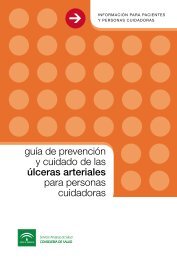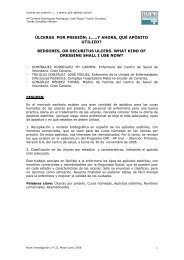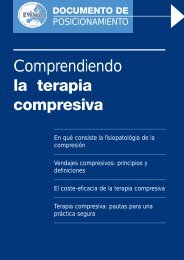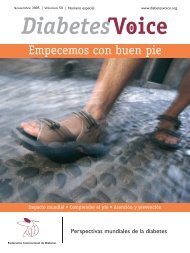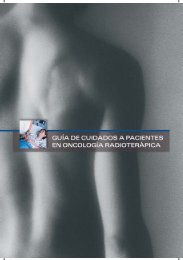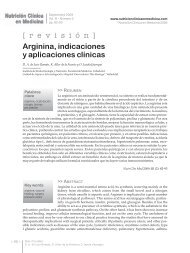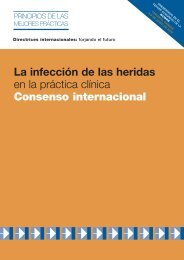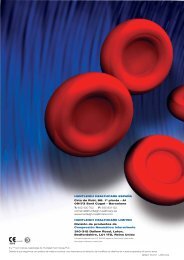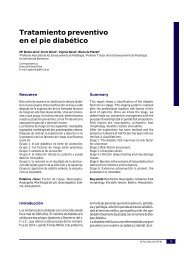Descargar - Úlceras.net
Descargar - Úlceras.net
Descargar - Úlceras.net
- No tags were found...
Create successful ePaper yourself
Turn your PDF publications into a flip-book with our unique Google optimized e-Paper software.
Open Surgery for Revascularizationof the Diabetic FoodFRANCESCO SPINELLI, FRANCESCO STILO, MICHELE LA SPADA AND DAVID BARILLÀUnit of Vascular Surgery, Department of Cardiovascular and Thoracic Sciences, University of Messina, ItalyCritical Limb Ischemia (CLI) is caused byperipheral arterial obstructive disease and isassociated with a high risk of limb loss in theabsence of revascularization. The indicationfor the treatment is based on clinical status ofpatient, lesion morphology, surgical risk, ASAclassification, life expectancy, and surgicalexperience of the centre. For the overwhelmingmajority of patients with CLI (Rutherford4-5-6) (1-3), revascularization represents thebest option. The superficial femoral andpopliteal arteries are more often affected inpatients with diabetes than is the aortoiliacsegment, so when claudication is present, it isusually experienced in the calf. Diabeticpatients with foot ulcers and gangrene areoften found to have a strong popliteal pulseand absent pedal pulse. This finding is due to ahighly prevalent pattern of predominantly tibialartery occlusive disease in diabetics. Inmost cases the peroneal artery is patent andit is the last of the three crural arteries toocclude. The primary pedal arch is almostalways incomplete, but in most cases at leasta segment of the plantar arch retains patency,if not continuity with the anterior and posteriorcirculation. Consequently, by-pass to asingle tibial or peroneal artery usually providesgood blood flow to the foot, so it portendsa high likelihood that the patient is asuitable candidate for revascularization (4).In this case of very poor run-off, bypass tothe «isolated segment» is the preferentialoption with a reasonable success rate (5-7).On the basis of actual recommendations, themorphological indications to bypass graft arerepresented principally by TASC D patients.This classification did not entail the clinicalstatus of the patients that also influences theresults and the time of healing (8).These general observations underscorethe importance of the preoperative flowchart.Firstly we have to decide which patientis indicated for EV and which one for bypassgraft. The improved resolution of dupleximaging has made this diagnostic modality thegold standard to define disease location (9).A significant advantage of this noninvasivemodality is that it yields both anatomic andblood flow information, providing an assessmentof the hemodynamic effect of arterialocclusive lesions. In some patients (redosurgery, young patients, clinical indication toEV as first-line treatment), standard arterio -graphy is still the «gold standard». The ultrasoundstudy should be preferentially performedby the same surgeon that will be theoperator. The leg should be preferentiallyexamined in hanging position to favor theidentification of very low flow in the distalvessels and to correctly measure the veinsalong their course.Since Kunlin’s first description of the successfuluse of autologous vein to bypassfemoro-popliteal arteriosclerosis obliterans(10-11), many studies have sought to determi<strong>net</strong>he best material and technique forrevascularization. Different materials havebeen used for infrainguinal bypass grafting,including autologous and homologous graftsfrom the saphenous vein or the human umbi -lical vein as well as synthetic graft materialssuch as polytetrafluoroethylene (PTFE) orpolyester (Dacron) grafts (12). There is nearuniversal agreement that autologous vein isthe best conduit for infrainguinal bypass at all





